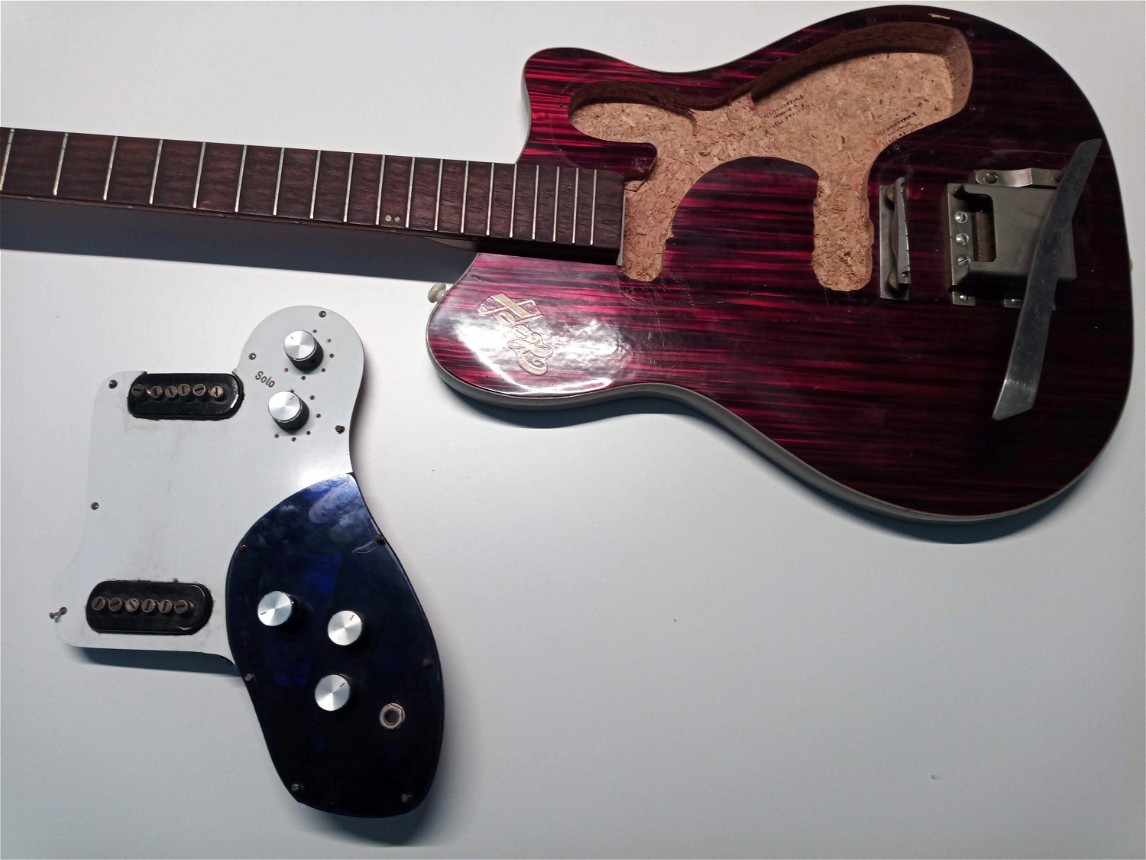Historic E-guitar: Introduction And Idea Behind
Design
A first design is finished, a complete explanation of the targeted functionality is included, and the targeted printer technology has been provided. This AME design also provides a model which is proven to fulfill the targeted functionality.

Welcome to our captivating journey of transforming a non-working vintage masterpiece guitar into a playable instrument while preserving its original body and style.
In this episode, get ready to witness the revelation of the guitar's original design and embark on the first step of our transformative journey. We will delve deeper into the realm of E-guitars and pickups, uncovering the hidden secrets that lie within.
The custom made Hopf guitar from 1950s/1960s
Presenting the exquisite custom-made Hopf branded guitar, crafted by guitar builder Manfred Pletz.
The old pickguard
The custom pickguard of this guitar adds a unique touch to the original design. It is inspired by the original but has distinct elements, showcasing creativity and attention to detail in crafting a one-of-a-kind instrument.
The Pickguard design
Hopf original Scratchboard 3D-Scan top view
Volume - & Tone Control Circuit (Original)
The volume and tone control circuit of original guitar features configuration with options for Solo I, Solo II, Rhythm, and Off. We are trying to understand and whether it is possible for us to recreate this circuit to maintain the authenticity and essence of the guitar's original design. It is important to decipher the intricacies of the circuitry, ensuring that the recreated version stays true to the original and preserves the unique sound possibilities it offers.
The particular guitar we currently have is a custom-made instrument. The volume and tone control circuit is specifically designed for single-coil pickups. As you can see in the picture, you will notice that the pickups are not connected, and instead of radio buttons, rotary switches are utilized. These unique features contribute to the distinctive character and design of this guitar, setting it apart from conventional models.
Volume - & Tone Control Circuit (Decisions for Modernization)
At this crucial stage, we are faced with the decision of selecting the most suitable alternative circuits to work with the modernization process. The key question revolves around the optimal implementation of radio buttons as a replacement for the pickup selector, allowing for Solo I, Solo II, Rhythm, and Off functionalities.
On the other hand, we faced the decision of whether the old guitar body provided sufficient space without modifications to accommodate new single coils, humbuckers, or various styles of humbuckers. However, we discovered that standard components available in the market did not fit into the vintage body. This realization sparked the idea of utilizing AME printing to create customized components that perfectly match the contours of the original guitar body.
We have narrowed down our options to two choices: either adopting the Les Paul/Gibson Style or exploring the possibilities of coil splitting.
First picture - Les Paul/Gibson Style
Second picture - Coil Splitting
In our upcoming episode, we will delve deeper into the ongoing process of modernizing this extraordinary masterpiece. Join us as we provide further insights and updates on our work, showcasing the dedication and innovation that drives our mission. See you soon!
References
- Musikhaus , T. (n.d.). Thomann online-Ratgeber Kombinationen Pickups für E-gitarren. Musikhaus Thomann. https://www.thomann.de/de/onlineexpert_page_pickups_kombinationen.html
- LoneLobo. (2023, March 22). Verdrahtung / Schaltung Aller Tonabnehmerkonfigurationen (E-Gitarren-Pickups). Musiker. https://www.musiker-board.de/threads/verdrahtung-schaltung-aller-tonabnehmerkonfigurationen.36409/
Back to the main article
The exhibition presents an exemplification of how AME technology has the capability to fulfill distinctive design and shape necessities, ultimately facilitating the process of converting current structures into electric ones.
Related Articles

















